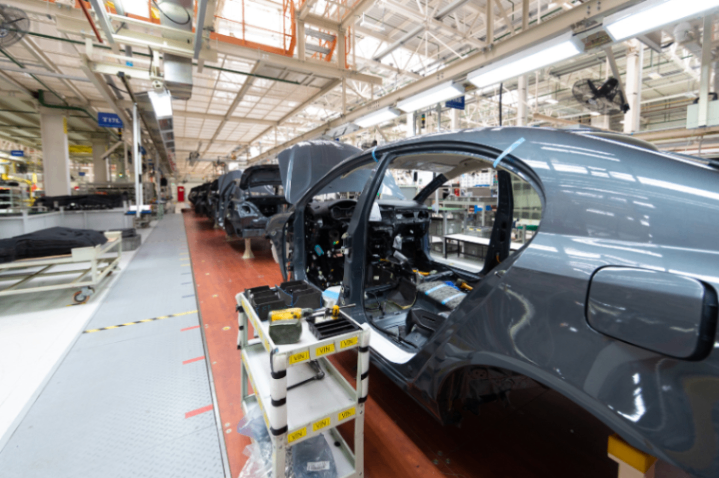Industry fell by 3.2 percent year-on-year in May
Economic commentary by Jakub Seidler, Chief Economist of the CBA

Industrial production fell by 3.2% year-on-year in May, while the consensus of analysts according to Reuters expected an annual decline of 0.6% (chart 1). The year-on-year decline thus deepened from April's 0.4% and, as in Germany, fell noticeably short of expectations. The figures are adjusted for differences in the number of working days. However, May had the same number of working days this year as a year ago. On a month-on-month basis, output fell by 2.2% after rising slightly in April. The main contributors to the industrial decline were the production of automobiles, other transport equipment, machinery and electrical equipment. Equipment. New orders also fell month-on-month and annual growth was broadly flat. Although this year's May figures are visually worse, partly due to a higher comparison base and probably due to the impact of the holidays in Germany, they generally confirm that domestic industry remains on the edge of recession. For the full year 2023, the industry declined by 0.8%, and although the consensus of economists expects growth of around 1.3% for this year, the data so far is less optimistic, with the industry declining by more than 1% from January to May.
MoM (seasonally adjusted), the industry fell 2.2% in May while it rose 0.6% in April. However, the month-on-month dynamics have been noticeably volatile this year, ranging from -3.1% in January to +2.1% in February. The most significant contributors to May's decline were the production of automobiles (-4.8% mom), machinery and equipment (-7.4% mom) and other transport equipment (-17% mom). Most manufacturing sectors then recorded at least a slight decline, with the exception of chemicals, computers and clothing.
On a year-over-year basis, the industry declined by a strong 3.2%, the sharpest decline since last September. These are calendar-adjusted figures. The main contributor to the decline was car production, which fell by 7% (Chart 2), the weakest year-on-year development in two years. However, the above-mentioned sectors also declined more strongly on a year-on-year basis, with a significant month-on-month decline. The year-on-year decline was then amplified by the impact of the higher comparative base from last year.
New orders also declined month-on-month in May and the year-on-year momentum slowed and was broadly flat. In the case of autos, domestic orders then declined year-on-year for the first time this year (Chart 3).
May industrial production also disappointed noticeably in Germany, falling by a strong 2.5% month-on-month versus expectations of stagnation. The month-on-month decline in industrial production then intensified to 6.7% after April's -3.7% and new orders did not develop positively either, falling by 1.6% in May, i.e. for the fifth month in a row, and their year-on-year decline then intensified to 8.6% (Chart 4). Although the May data may be distorted by the larger number of May bank holidays, for which the data cannot always be adjusted, overall the latest data from Germany do not meet the positive expectations of the first quarter of the year and suggest that the industry there is failing to kick-start faster growth, while the significant fall in car production (-5% mom) is also an unfavourable fact.
Today's numbers do not bring much optimism for the domestic industry. Although industrial confidence itself rose in June, a closer split between the manufacturing and automotive segments suggests that expected demand in the most important part of the industry is weak (Chart 5). Automobile production, in turn, will not be helped by production curtailments at the largest carmaker due to some parts outages in the coming months. This suggests that industry improvement is unlikely in the coming months. While the latest consensus of economists expects the domestic industry to grow by 1.3% this year, the estimate is likely to be revised downwards soon in light of the latest numbers, as the domestic industry declined by 1.3% from January to May (Chart 6).